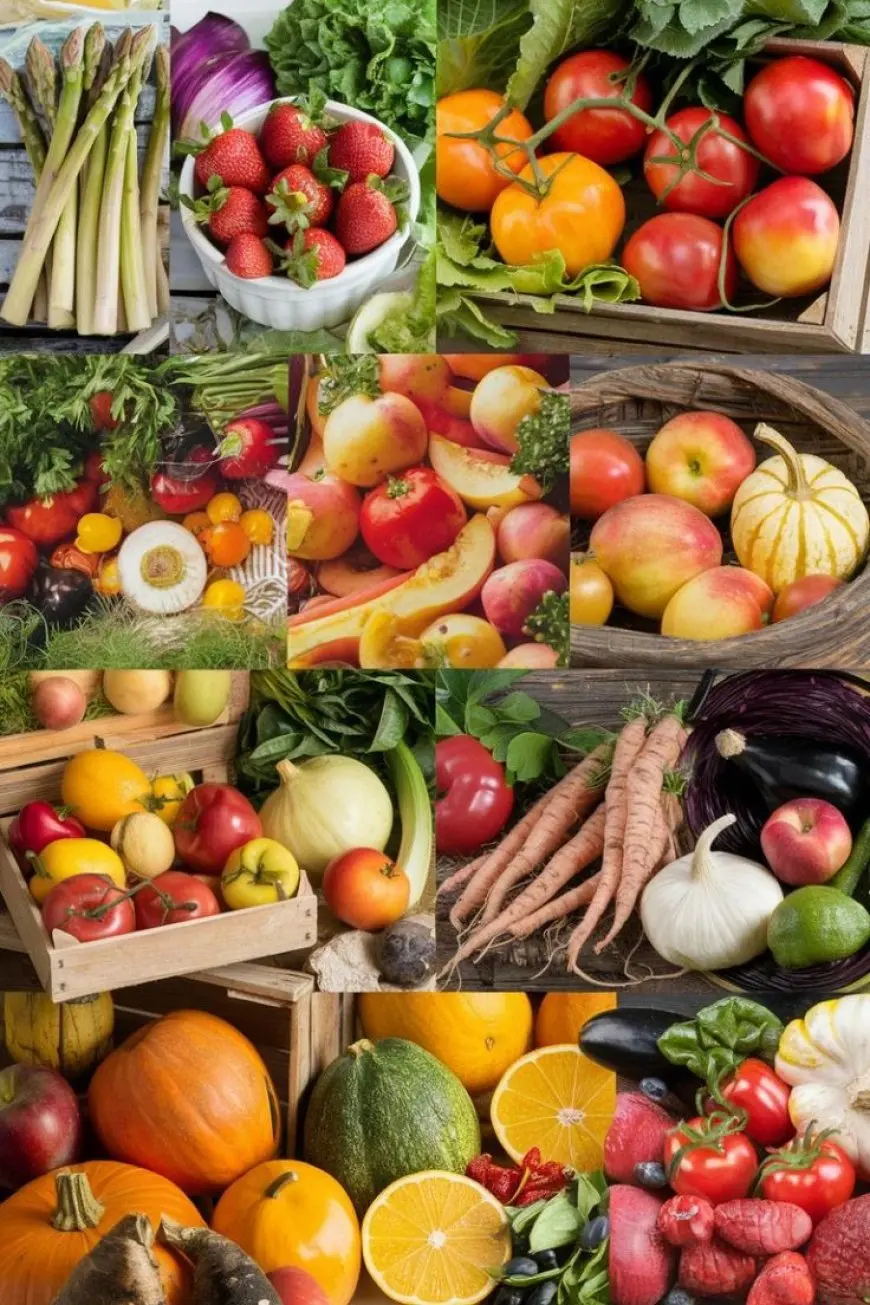Eating Seasonally: The Benefits and What’s in Season
Eating Seasonally: The Benefits and What’s in Season

Eating seasonally means consuming fruits, vegetables, and other foods when they are naturally in season in your local area. This practice not only offers various health benefits but also supports the environment and local farmers. Here’s why you should consider eating more seasonally and how it can enhance your diet and lifestyle.
Benefits of Eating Seasonally
Fresher, Tastier Food
Seasonal produce is picked at its peak ripeness, meaning it often has more flavor, better texture, and richer nutrients compared to out-of-season options. For example, a vine-ripened tomato in the summer tastes far better than one imported from another country in the winter. Eating in-season foods allows you to experience the true flavor of the produce, enhancing your meals.
Nutrient-Rich Options
Fruits and vegetables that are in season are often more nutrient-dense. When food is grown in its natural environment and harvested at the right time, it retains its vitamins, minerals, and antioxidants better than produce that’s been stored or transported long distances. Seasonal foods can help boost your immune system, improve digestion, and promote overall well-being.
Supports Local Farmers and the Economy
By buying foods that are in season, you’re helping local farmers and businesses. Seasonal produce is often grown locally, so purchasing it supports the local economy and reduces the carbon footprint associated with importing food from faraway places. Buying local also helps ensure that the food is fresher and that the agricultural community thrives.
Cost-Effective
In-season fruits and vegetables tend to be more affordable because they are plentiful and don’t need to be imported or stored for long periods. During peak harvest times, prices drop, making it easier to eat healthy on a budget. Seasonal foods often provide the best value, allowing you to enjoy more for less.
Environmentally Friendly
Eating foods that are in season and locally grown reduces the environmental impact associated with food production. By choosing seasonal produce, you’re helping cut down on greenhouse gas emissions, water usage, and the energy required to transport food across long distances. Supporting sustainable agriculture can contribute to a healthier planet.
What’s in Season?
The types of foods available vary depending on the season and your geographic location. However, here’s a general guide to what’s in season during each part of the year:
Spring
- Fruits: Strawberries, rhubarb, cherries, apricots, and early peaches.
- Vegetables: Asparagus, peas, spinach, lettuce, radishes, artichokes, and spring onions.
Summer
- Fruits: Blueberries, blackberries, raspberries, watermelon, peaches, plums, nectarines, and grapes.
- Vegetables: Tomatoes, cucumbers, zucchinis, bell peppers, corn, eggplant, and green beans.
Fall
- Fruits: Apples, pears, figs, pomegranates, and grapes.
- Vegetables: Pumpkins, sweet potatoes, squash, carrots, kale, beets, and Brussels sprouts.
Winter
- Fruits: Oranges, grapefruits, lemons, apples, and pears.
- Vegetables: Kale, cabbage, turnips, carrots, parsnips, leeks, and winter squash.
These are just a few examples, and what’s in season can depend on your local climate and region. Visiting a local farmer’s market or subscribing to a community-supported agriculture (CSA) program can give you insight into what’s currently available in your area.
How to Eat Seasonally
Plan Your Meals Around Seasonal Ingredients
Try designing your meals around what's currently in season. Seasonal fruits and vegetables often work well in soups, salads, smoothies, or as roasted sides. You can also get creative by making seasonal dishes from scratch, like berry cobblers in summer or squash soups in fall.
Freeze Seasonal Produce for Later
If you have an abundance of seasonal produce, consider freezing some to use later in the year. Many fruits and vegetables freeze well and can be added to smoothies, soups, or casseroles during off-seasons.
Join a CSA or Visit Local Farmers' Markets
Support local agriculture by joining a CSA program, where you get regular deliveries of seasonal produce directly from local farmers. Alternatively, visiting farmers’ markets allows you to see what’s in season and often provides an opportunity to try new foods.
Learn About Seasonal Recipes
Explore seasonal recipes online or in cookbooks that focus on utilizing fresh ingredients that are available during each season. This can inspire you to try new cooking techniques and discover new favorites.
Eating seasonally is a simple yet powerful way to improve your diet, support your community, and protect the environment. By choosing fresh, locally grown, and nutrient-rich foods, you’ll enjoy better-tasting meals and experience the health benefits of foods at their peak. Try incorporating more seasonal ingredients into your meals and see how it can transform your eating habits.







